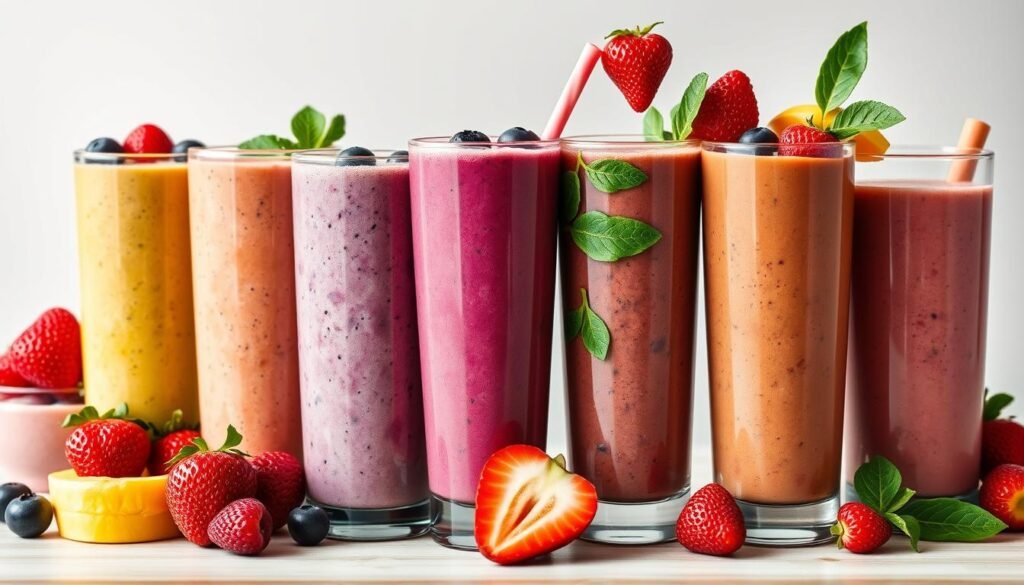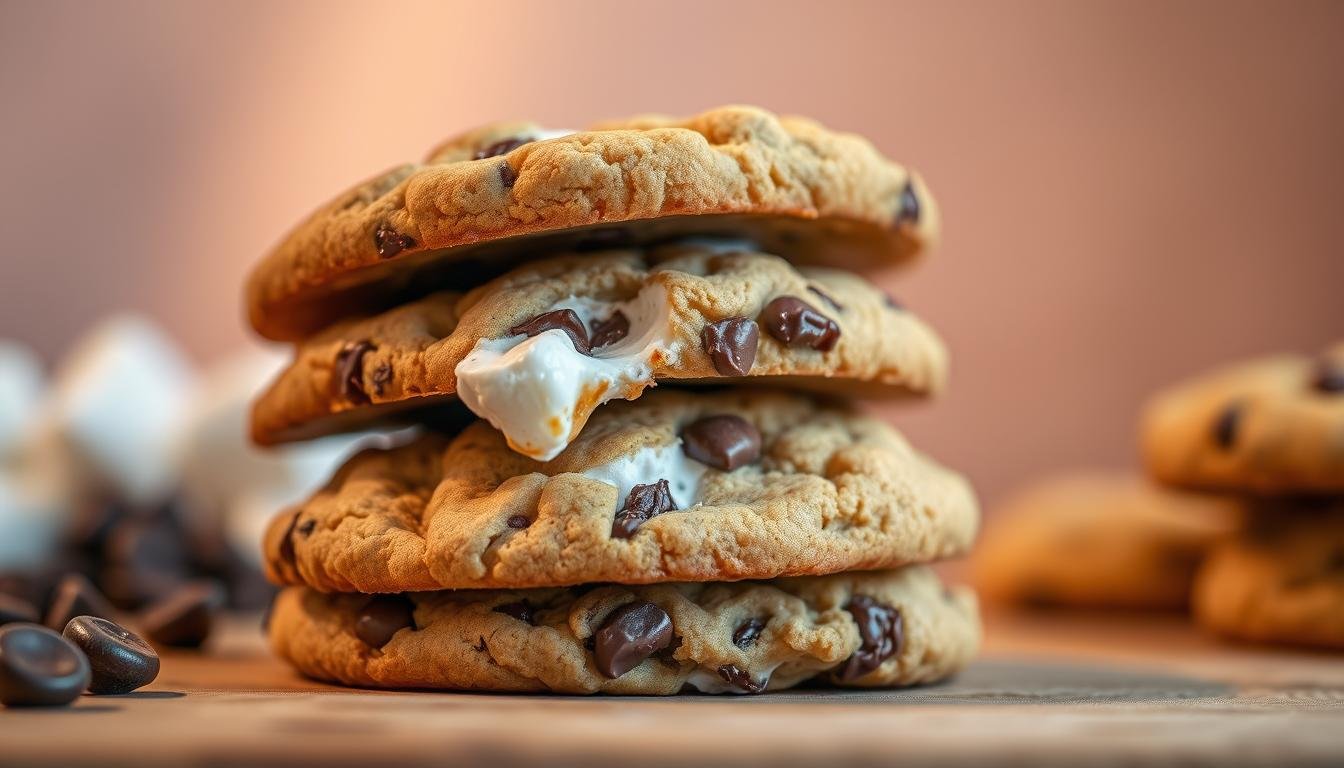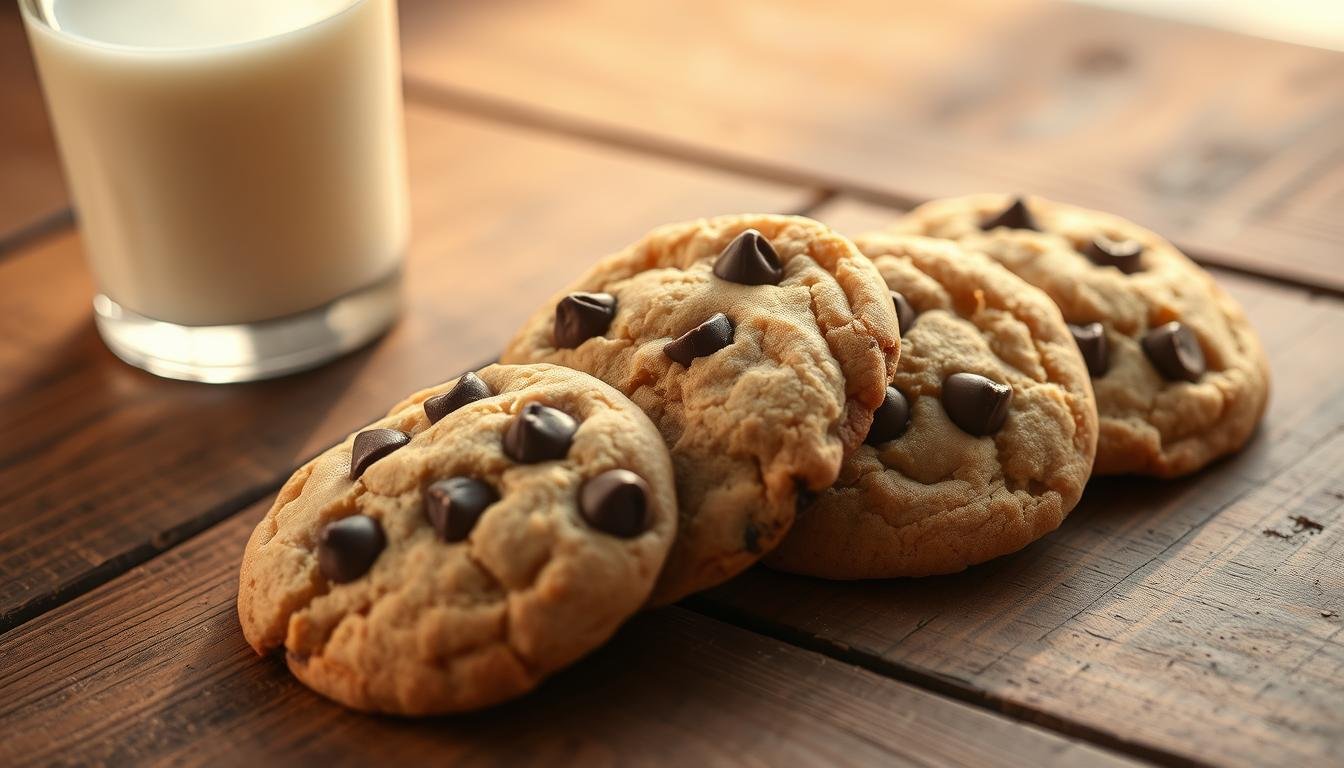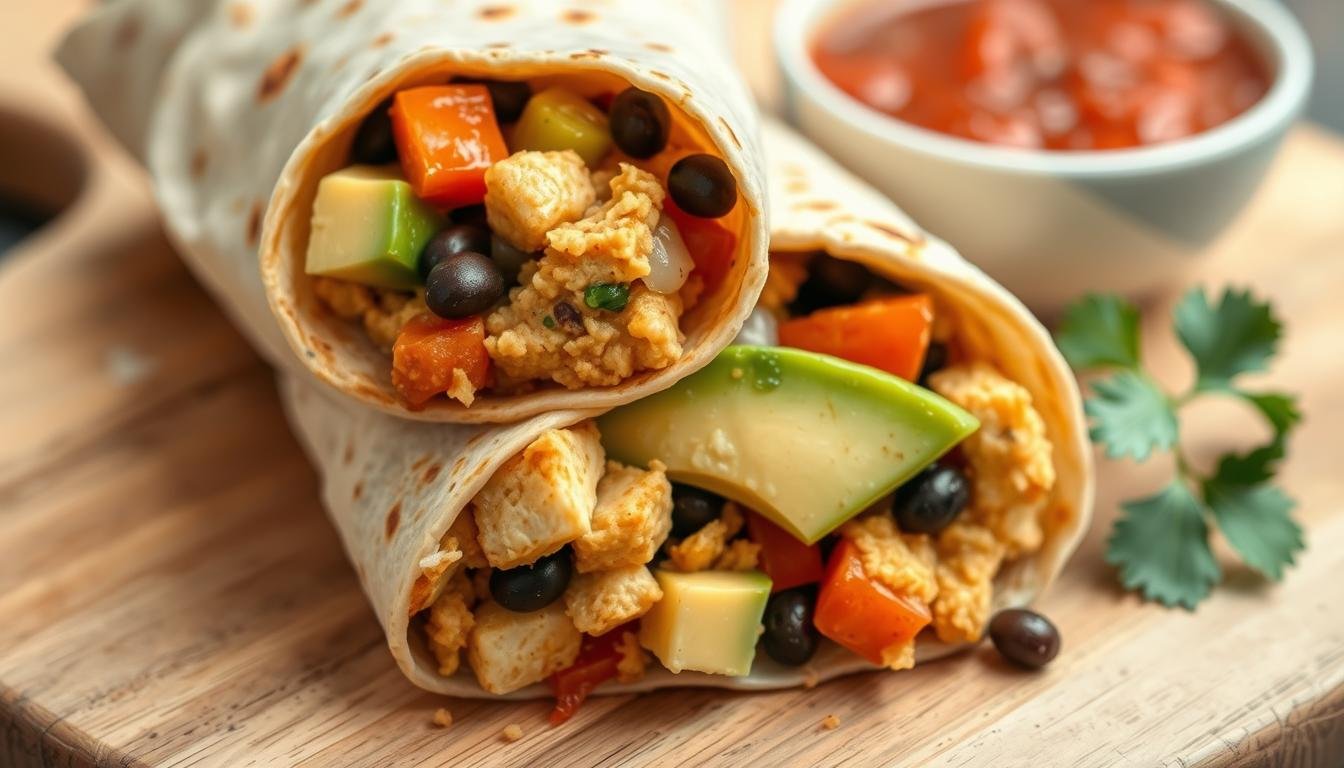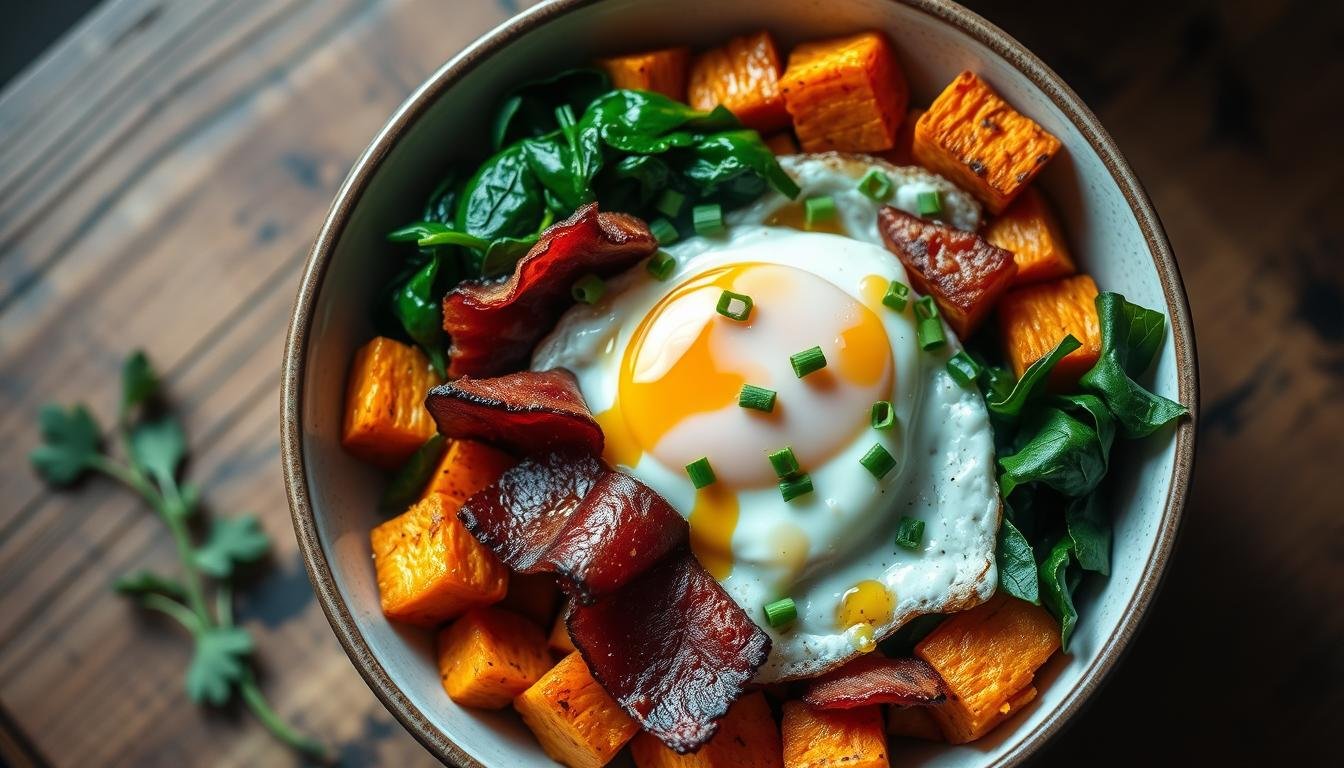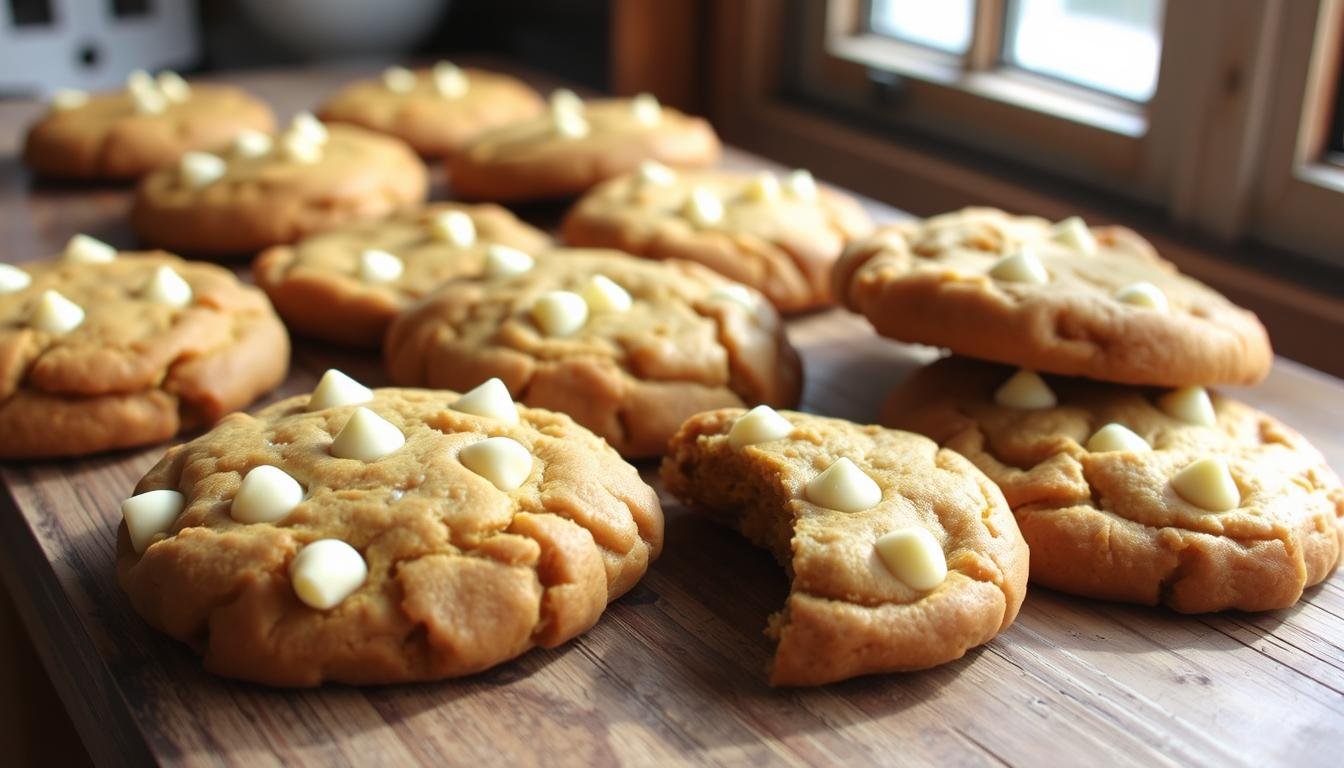I love starting my day with a quick blend. These smoothies are perfect for busy mornings. They mix fruit, veggies, protein, and fats into a tasty drink.
My secret is simple. I blend milk, fruit, a mild veggie, banana, and sometimes yogurt or nut butter. This mix is healthy, easy to make, and can be frozen.
I make smoothies with yogurt for a tangy taste and protein. I also have recipes for toddlers and babies. These smoothies are full of fiber and nutrients, making veggies easy to accept.
Keep reading this 10 best kid-friendly breakfast smoothies with hidden veggies for fun, easy breakfast ideas for kids. I share ten recipes and tips to sneak in veggies without changing the taste.
Key Notes;
- Smoothies are a quick, versatile way to boost morning nutrition for kids.
- My master formula uses a liquid, fruit, a mild veggie, frozen banana, and 1–2 add-ins.
- Yogurt and full-fat bases add protein and calories for toddlers who need to gain weight.
- These nutritious morning smoothies keep fiber and balance macros better than juice.
- Recipes include baby-safe textures and freezer-friendly prep for busy families.
Why I Choose Smoothies for Busy Mornings and Picky Eaters
I choose smoothies for busy mornings and picky eaters. They mix fruit, milk, and greens into a drink. This drink is full of nutrients and easy to eat on the go.
Benefits of smoothies over juices and shakes
Smoothies keep all the fruit and veggies, so you get more fiber. This makes you feel full longer than juice. I avoid making smoothies too thick by not adding too much.
Smoothies are more than just a drink; they’re a meal. They have protein, healthy fats, and carbs from fruit. This makes them better than shakes for a nutritious start to the day.
How smoothies help picky eaters accept vegetables
Using sweet fruits like banana or mango hides greens and veggies. Kids get vitamins and fiber without tasting the veggies. This makes them more open to eating veggies later.
With smoothies, I can control how sweet or creamy they are. I match flavors to what each child likes. This way, they get used to eating veggies without fighting it.
Time-saving advantages for US parents on weekday mornings
Smoothies are quick to make, taking just five minutes. I keep frozen fruit, greens, and yogurt ready. This lets me make a smoothie in under two minutes.
They’re great for busy families. You can drink them, put them in pouches, or freeze them as popsicles. This makes smoothies a quick and healthy choice for busy mornings.
Kid-Friendly Breakfast Smoothies with Hidden Veggies
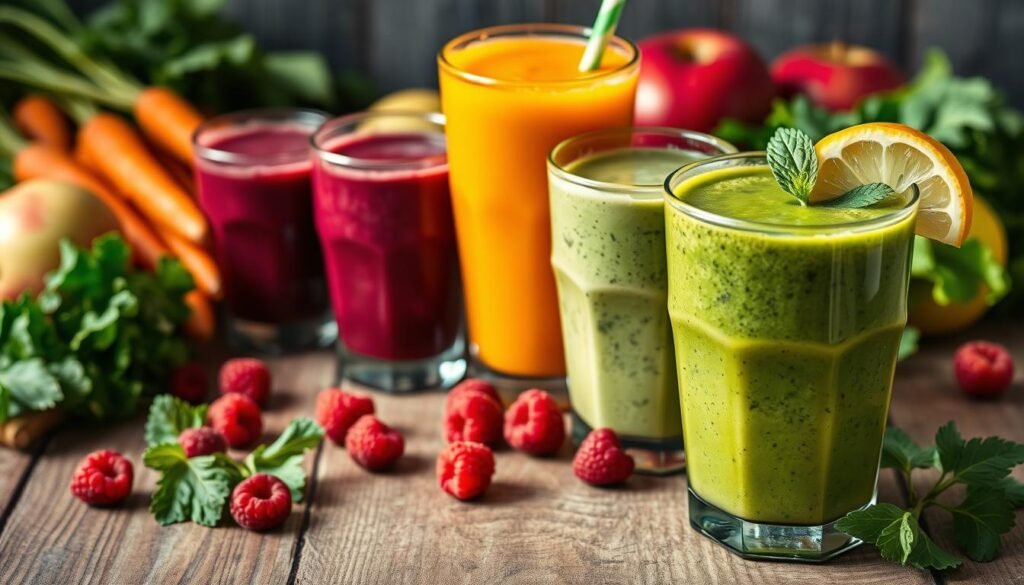
I make breakfast easy and sneaky for kids. I use mild veggies and creamy fruits to hide the texture. I choose colors and tastes that kids love first.
I blend veggies until they’re smooth and mix them with banana or berries. I add veggies little by little and taste as I go. A high-speed blender like Vitamix makes the smoothies silky and yummy for toddlers.
I pick mild veggies that blend in well. Raw cauliflower, zucchini, summer squash, and frozen spinach make creamy bases. Cooked sweet potato, butternut squash, and beets add color without a strong taste.
Freezing and prep make mornings easier. I freeze chopped zucchini and spinach for months. Frozen banana adds sweetness, and half-frozen fruit keeps it smooth for kids.
I test blends by starting with fruit and adding a small veggie scoop. This makes the smoothies taste fruity. It also helps me make veggie-packed smoothies that kids enjoy.
For non-green colors, I match fruits and veggies by color. Strawberry with cauliflower, mango with sweet potato, or blueberry with beet. These combos make healthy smoothies that look and taste good.
I add strong ingredients like seeds or nut butters last. I use them in small amounts. This keeps the smoothies mild and tasty for our mornings.
Master Smoothie Formula for Toddlers, Kids, and Babies
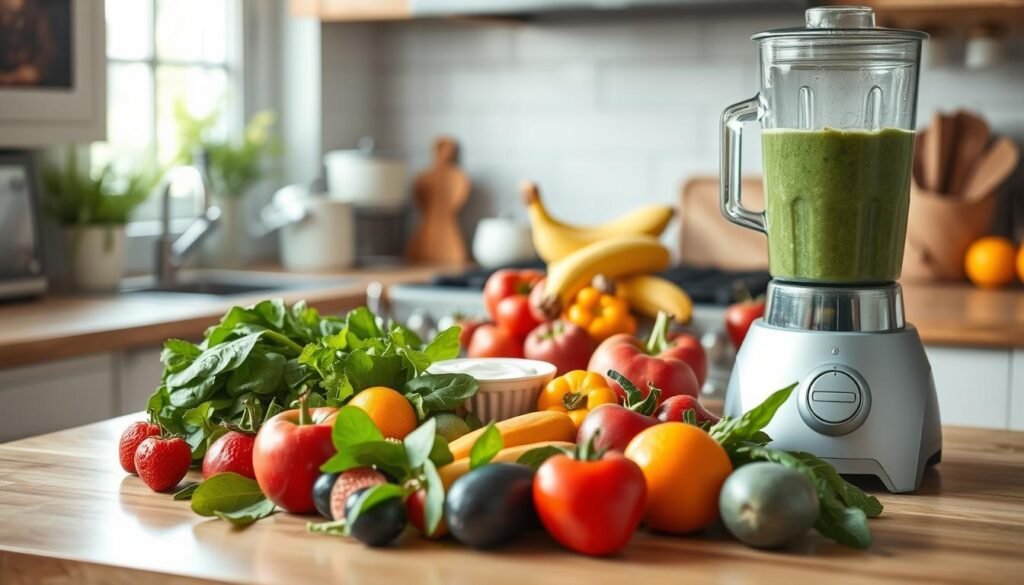
I use a simple formula every day. It’s 1 cup milk, 1 small banana, 1/2 cup fruit, and 1/2 cup vegetables. You can add 1–2 optional extras. I like using oat or almond milk for its texture and taste.
Typical ingredient proportions I use
I aim for balanced macros in each batch. Carbs come from fruit and veggies. Protein is from milk, yogurt, or pea-based milks. Fat comes from avocado or nut butter.
For a toddler serving, I use one banana, 1 cup liquid, and 1 cup of fruit and veg combined. A high-speed blender makes the smoothie silky. For thicker textures, I add less liquid or frozen fruit. For thinner smoothies, I add more liquid in small steps.
Swaps for allergies and dairy-free preferences
I have allergy swaps ready. Oat, almond, and pea milks are good dairy-free options. I choose unsweetened coconut or oat yogurt for dairy-free yogurt.
If a child can’t have banana, I use avocado or nut butter for creaminess. I check the protein level in plant-based milks. Pea-protein milks and plain kefir are better than sweetened ones.
Age-appropriate texture and serving tips for 6 months to 1 year
For babies starting solids, I recommend thin, spoonable purees. From 6 to 9 months, I serve small spoonfuls of blended fruit and veg with breastmilk or formula.
From 9 to 12 months, I thicken the blend slightly. I offer small sips from an open cup or a reusable pouch. For toddlers, I aim for a straw-friendly texture in a sippy cup. I never replace breastmilk or formula with smoothies for babies 6 months. I introduce seed and nut flavors as seed butters only after getting pediatrician approval.
| Age | Texture | Typical Volume | Safe Add-ins |
|---|---|---|---|
| 6–9 months | Thin, spoonable puree | 1–3 tablespoons per serving | Mashed banana, cooked apple, plain breastmilk/formula |
| 9–12 months | Thicker sippable blend | 2–4 ounces small sips | Yogurt, avocado, smooth seed butter |
| 1–3 years (toddlers) | Straw or sippy cup consistency | 4–6 ounces | Nut butters, kefir, ground seeds, mild greens |
I test new flavors by starting with familiar fruit and one hidden veggie. I keep easy breakfast ideas for kids in rotation. This makes mornings calm and predictable. These simple steps help the whole family enjoy smoothies without stress.
Simple Strawberry Banana Smoothie with Cauliflower (Kid Favorite)
When mornings are busy and kids are picky, I turn to a quick recipe. This strawberry banana smoothie adds cauliflower for extra fiber and vitamins. It’s a hit with kids and fits my list of healthy smoothies.
I mix together milk, banana, strawberries, and a bit of cauliflower. The cauliflower blends to a creamy texture without changing the taste. Frozen banana makes it thick and smooth, just like a milkshake.
Ingredients and why cauliflower works as a hidden veggie
My recipe includes 1 cup almond milk, 1 frozen banana, 1/2 cup strawberries, and 1/2 cup cauliflower. Cauliflower is mild and blends to a silky texture. It’s great for adding nutrients without a strong taste.
Step-by-step blending method for a creamy toddler texture
First, I add the liquid, then the banana, strawberries, cauliflower, and any extras. Blend until smooth, scrape the sides, and add more milk if needed. For babies, thin it down and serve with a spoon. Older toddlers can use a straw or sippy cup.
Variations: yogurt swap, protein boost, and serving ideas
Replace half the milk with Greek yogurt for extra creaminess and probiotics. Add a tablespoon of nut butter or pea protein for more calories and protein. Serve in pouches, cups, or freeze into popsicles for snacks.
| Variation | Why I use it | Best age or use |
|---|---|---|
| Half milk / half yogurt | Boosts creaminess and adds probiotics | 12 months and up |
| Nut butter or hemp seeds | Increases protein and healthy fats for growth | 18 months and up (watch for allergies) |
| Thin with extra milk | Makes spoonable texture for younger babies | 6–12 months |
| Freeze into pops | Kid-friendly treat and make-ahead option | 2 years and up |
Orange Creamsicle Smoothie with Butternut Squash (Fun and Nostalgic)
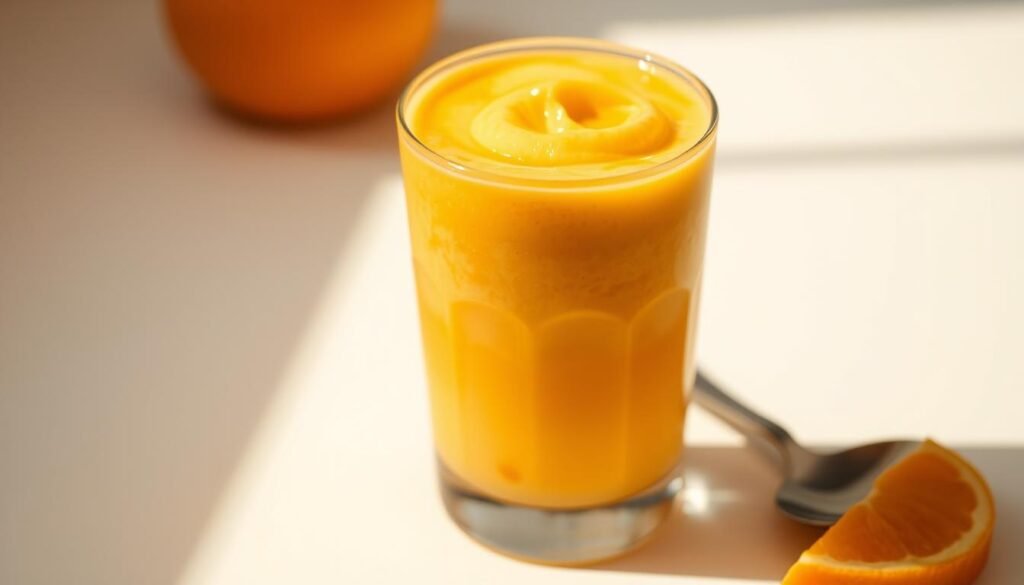
I love making a smoothie base from roasted butternut squash. It tastes like a classic creamsicle. I mix cooked squash with orange, banana, and yogurt for a creamy, tangy drink.
Why cooked squash blends well with citrus
Roasted squash is sweet and buttery, balancing orange’s acidity. Its starch makes the smoothie thick without tasting veggie-like. Pureeing it fully makes the citrus shine.
Balanced macros: adding protein and healthy fats
I add yogurt for protein. For more calories, I use almond butter or avocado. A kid-safe protein powder is okay with a doctor’s okay.
Serving suggestions and toddler-safe notes
I serve it cold in small cups for toddlers. For babies, I puree it smooth and strain it. I don’t add sugars and start with small amounts of protein.
| Ingredient | Purpose | Kid Tip |
|---|---|---|
| Cooked butternut squash (½ cup) | Creates creamy base, hides vegetable flavor | Use leftover roasted squash for faster prep |
| Orange segments or clementine (1 whole) | Bright citrus flavor for creamsicle profile | Remove membranes for smoother blend |
| Banana (½ small) | Natural sweetness and extra creaminess | Use ripe banana for best flavor without sugar |
| Greek yogurt or kefir (¼–½ cup) | Protein and tang, stabilizes texture | Choose plain, whole-milk varieties for calories |
| Avocado or nut butter (1 tsp) | Healthy fats and satiety | Introduce slowly to monitor allergies |
| Optional kid-friendly protein powder (1 scoop) | Boosts protein for growing kids | Use pediatrician-approved brands only |
| Ice or frozen fruit | Chills and thickens without diluting flavor | Half frozen keeps texture smooth for toddlers |
Chocolate Banana Smoothie with Spinach or Avocado (Sneaky Greens)
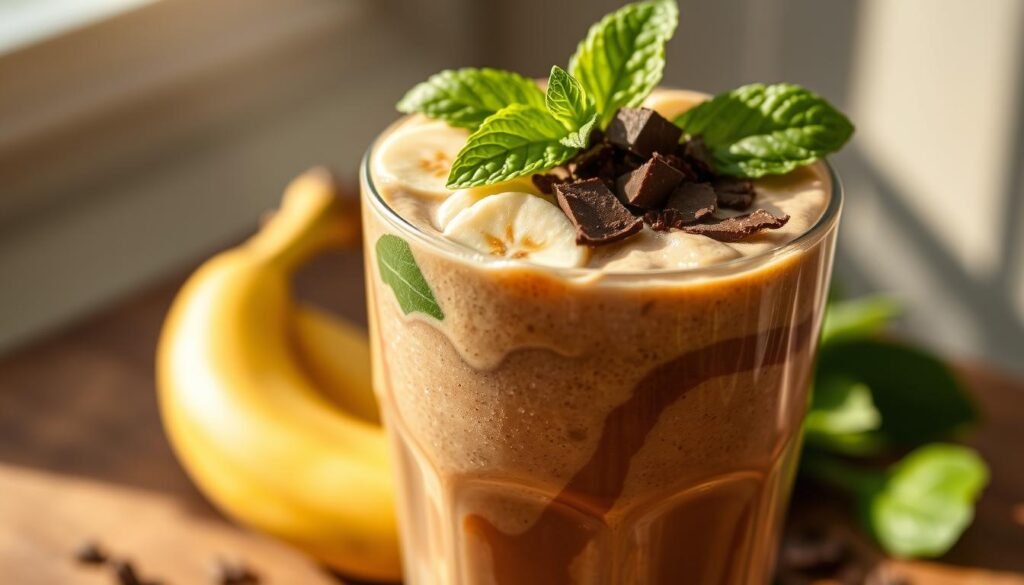
I love making a chocolate banana smoothie to hide greens. It tastes like a milkshake thanks to cocoa and banana. Frozen banana makes it creamy and hides any green taste.
How cocoa and banana mask the flavor of greens
Cocoa’s strong taste hides the spinach’s green flavor. Banana adds sweetness and makes it thick. Blending it with frozen fruit makes it feel like a special treat.
Options for adding nut butter or seeds for weight gain
For extra calories, I add peanut or almond butter. It adds healthy fats and protein. I also use hemp seeds, chia, or Greek yogurt for extra calories. Starting with a small amount keeps the flavor chocolatey.
Tips to avoid gritty texture and overdoing add-ins
Texture is important for kids. I blend it with a high-speed blender and frozen banana for a smooth drink. If I add seeds or oats, I start with a little and check the taste. Too many can make it gritty. For babies under one, I check with a doctor before using cocoa.
Mango Coconut Smoothie with Sweet Potato (Tropical and Filling)
I turn to this tropical smoothie when mornings are tight. It’s a filling, kid-friendly choice. Sweet potato makes it creamy and sweet. Mango and coconut milk add a bright flavor. Avocado or full-fat yogurt add healthy fats and keep it filling.
Using cooked sweet potato for creaminess and calories
Cooked sweet potato puree makes it smooth and adds calories. I bake or steam sweet potatoes, then mash them. This makes the smoothie thick and creamy for toddlers and babies.
I skip added sugars and let the natural flavors shine. For extra energy, I add full-fat Greek yogurt or peanut butter.
Best liquid bases for babies and toddlers (kefir, nondairy milk)
The liquid base changes the smoothie’s nutrition. Kefir adds probiotics and protein, great for digestion. Almond, oat, or coconut milk are good plant-based choices. Whole cow’s milk or Greek yogurt add calcium and protein.
For babies under 12 months, I thin it with breast milk or formula. For older toddlers, I keep it thicker to encourage chewing.
Freezer-friendly prep and make-ahead portions
I freeze single-serve portions to save time. I portion cooked sweet potato, mango, and optional greens into bags for up to three months. Each bag is ready for busy mornings.
Freezing blended smoothies in popsicle molds is another trick. I thaw them slightly and add a splash of liquid before serving. This makes a cool breakfast or snack. Always avoid honey for babies under one year.
| Component | Why I Use It | Baby (6–12 mo) | Toddler (1–3 yr) |
|---|---|---|---|
| Cooked sweet potato | Creamy texture, natural sweetness, extra calories | Pureed smooth, no chunks | Mashed or small soft pieces for texture |
| Mango | Bright flavor that masks vegetable notes | Well-blended, small amounts | Generous portion for sweetness |
| Kefir | Protein and probiotics | Use if pediatrician approves | Great for digestion and nutrients |
| Unsweetened nondairy milk | Light, hypoallergenic base | Thin to drinking consistency | Good for dairy-free families |
| Full-fat yogurt or cow’s milk | Boosts calcium and calories | Introduce as tolerated | Use for extra energy and creaminess |
| Avocado or nut butter | Healthy fats for growth and satiety | Introduce well-mashed or thinned | Stir in for extra calories |
This smoothie is a favorite among healthy kid smoothies. It’s like a tropical treat but is also nutritious. I test small tastes first and adjust the texture to make it a hit with kids.
Blueberry Beet Smoothie and Other Colorful Veggie Blends
I try to make veggies fun, not scary. I use colors like pink, orange, and purple to grab kids’ attention. Berry and root combos hide veggies with bright colors and sweet tastes.
Colorful mixes help kids accept veggies. Blueberry and beet make a yummy purple drink. Strawberry and beet or peach and carrot add warm colors kids enjoy. These blends let me sneak in veggies without the green look.
Beets are special for little ones. For babies and toddlers under one, I use cooked, pureed beets. This lowers nitrate risk and makes digestion easier. For older toddlers, I sometimes use raw beet, finely grated and blended well.
Leftover roasted beet or canned unsalted beet puree works great. I start with a small amount to check if they like it. It’s good to know beets can turn urine or stool pink, but it’s safe.
Beets and berries are packed with nutrients. They have antioxidants, vitamin C, folate, and potassium. Carrots and sweet potatoes add vitamin A. Blending keeps fiber in, helping with digestion and energy.
When making a blueberry beet smoothie, I balance sweetness with protein or fat. Greek yogurt, nut butter, or avocado do the trick. This keeps the drink satisfying and blood sugar stable.
I want smoothies that are fun and easy for busy families. Freezing fruit, straining, or starting with small beet amounts makes adding veggies simple.
Boosts and Add-ins: Protein, Healthy Fats, and Fiber Without the Fuss
I add high-calorie ingredients to make smoothies more filling and tasty for kids. Small changes can turn a snack into a calorie-rich option. I suggest adding these boosts at snack time, bedtime, or between meals to help with healthy weight gain.
Which add-ins I recommend for toddlers to gain weight
I like using nut butters, mashed avocado, oats, and healthy oils like olive or flax. Full-fat Greek yogurt or kefir adds protein and richness. I start with a small amount of nut butter or avocado and add more as needed.
Seed and nut options for extra nutrition and how to introduce them
My favorite seeds and nuts are hemp, chia, ground flaxseed, almond butter, cashew butter, and smooth peanut butter. Always introduce allergens carefully, following pediatric advice. I blend seeds finely and use smooth nut butters for safety.
When and how to use yogurt, kefir, and full-fat bases
I add plain, full-fat Greek yogurt or kefir for extra protein and probiotics. Kefir adds a tangy flavor that goes well with berries and banana. For dairy-free options, I choose pea-protein milks like Ripple or protein-enriched nut milks.
| Add-in | Serving Size for Toddlers | Primary Benefit | Notes on Use |
|---|---|---|---|
| Almond or cashew butter | 1 tbsp | Calories, healthy fats, flavor | Use smooth butter; blend well to avoid streaks |
| Peanut butter | 1 tbsp | Protein, calories, familiar taste | Introduce per pediatric advice; choose natural brands |
| Hemp seeds | 1 tbsp | Omega-3s, protein, mild nutty flavor | Light texture; easy to blend into yogurt smoothies for kids |
| Ground flaxseed | 1 tsp–1 tbsp | Fiber, omega-3 ALA | Grind fresh to preserve oils; pair with a liquid base |
| Chia seeds | 1 tsp | Fiber, texture, hydration | Soak briefly or blend to avoid thickening too much |
| Full-fat Greek yogurt | 1/4–1/2 cup | Protein, creaminess, probiotics | Choose plain unsweetened; add fruit for sweetness |
| Kefir | 1/4 cup | Probiotics, tangy flavor, protein | Good swap for milk; pairs well with banana or berries |
| Avocado | 2–4 tbsp mashed | Monounsaturated fats, creaminess | Neutral flavor; blends into chocolate or banana smoothies |
| Oats | 2 tbsp (dry) | Calories, fiber, gentle thickener | Blend dry or soak briefly for smoother texture |
| Flax or fish oil | 1 tsp | Healthy fats, concentrated calories | Use small amounts; add to stronger-flavored blends |
I start with small portions to avoid overwhelming flavors. I blend well and track calories for weight gain. Smoothies should be part of a balanced diet, not a meal replacement. With careful choices, they can be a nutritious start to the day or a reliable snack.
Practical Tips to Make Smoothies More Fun and Appealing
I make mornings simple and bright to encourage kids to try new things. I use colorful cups and wide straws for fun. Freezing portions into popsicles makes breakfast feel like a treat.
For texture, I mix half frozen and half fresh fruit. Frozen banana makes it creamy without dairy. If it’s lumpy, I use a Vitamix to smooth it out. For thinner drinks, I add more milk or water.
I introduce new flavors slowly to avoid risk. I start with favorites like strawberry-banana or chocolate-banana. Then, I add veggie blends. I choose colors like orange, pink, and purple to make them more appealing.
To save time, I keep ingredients in the freezer and pantry. I blend a lot at once and freeze leftovers. Regularly serving smoothies makes them a routine, not a surprise.
If a child is hesitant, I offer tiny tastes. I use flavored cups or frozen pops. I make small changes at a time. This approach makes smoothies fun and tasty without stress.
Conclusion
I’ve learned that one smoothie recipe can be many by keeping it simple. I use a fruit, a mild veggie like cauliflower or spinach, a protein or fat, and a favorite liquid. This way, I can change it up for different needs and tastes.
Smoothies are quick and keep fiber, making them better than juices. I adjust them for school mornings or diet plans by changing the base and adding ingredients. This makes them nutritious and easy to make.
To keep things interesting, I switch up the fruits, veggies, and add-ins. I also use tricks like frozen fruit and colorful straws to make them fun. With the right ingredients and presentation, these smoothies are a great way to start the day.

